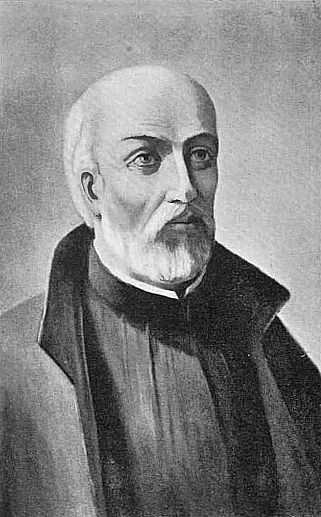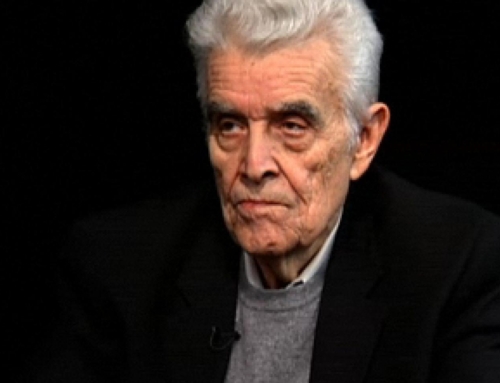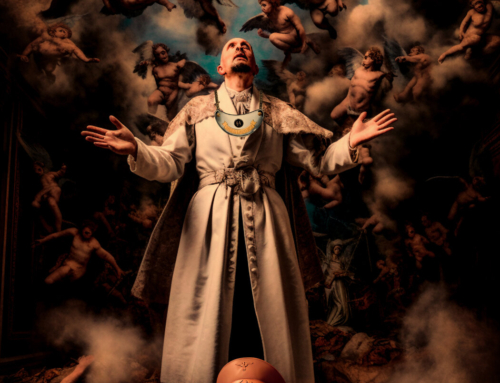The current Amazonian synod is a reminder that the struggles of Catholic missions to indigenous peoples is nothing new. Today is the memorial of St John deBrebeuf and his companions. The Jesuit missionaries to North America endured the most amazing hardships to bring the gospel of Jesus Christ to tribal people who were locked in superstition, in bondage to repulsive demons and trapped in a cycle of revenge, torture cannibalism and violence of the most unimaginable kind.
A few months ago I read St Jean de Brebeuf- Saint Among the Hurons– the best biography of the great Jesuit missionary. Learning about his work and martyrdom along with his companions, Isaac Jogues, Gabriel Lalemant and others sheds genuine light on the church’s mission to indigenous peoples.
There are a few salient points we can observe from their work:
- They Loved the Indigenous People – The Huron and Algonquin tribes were not very loveable. Violent warriors, they were also bloodthirsty torturers and cannibals. Their living conditions were brutal and their behavior animalistic. Nevertheless, the Jesuit missionaries professed genuine love for their tribal people. So he wrote to a fellow Jesuit: “When you reach the Hurons, you will find us with hearts full of love. We shall receive you in a hut, so mean that I have scarcely found in France one wretched enough to compare it with. Fatigued as you will be, we shall be able to give you nothing but a poor mat for a bed. Besides you will arrive when fleas will keep you awake most of the night.”
- They Adapted to the Culture – The Jesuit missionaries left the comfort of their European homes and went out to the primitive areas and lived with the people. They learned the language and found connecting points between the native culture and the Christian faith. Brébeuf was personally involved with teaching. His lengthy conversations with Huron friends left him with a good knowledge of their culture and spirituality. He learned their language and taught it to other missionaries and colonists. Fellow Jesuits described his ease and adaptability to the Huron way of life. Brébeuf tried to find parallels between the Huron religion and Christianity, so as to facilitate conversion of the Huron to the European religion.
- They Understood the Indigenous Religion – John deBrebeuf and Isaac Jogues kept diaries and the Jesuits chronicled their progress and the successes and failures of their mission. It is clear that they appreciated the native religion’s love of nature and integration of the people with the natural world, but it is also clear in their descriptions that they understood that the animism of the indigenous people was a fearsome religion in which the tribal people were in constant fear of the nature spirits and that their rituals were ways of invoking the demon spirits and being possessed by them.
- They Were Intelligent and Scholarly – These were not crude, ignorant men intent on imposing a foreign religion on innocent natives. As Jesuits they were well educated, bright and creative. In addition to their evangelization they studied and analyzed the indigenous culture. Brebeuf’s efforts to develop a complete ethnographic record of the Huron has been described as ‘the longest and most ambitious piece of ethnographic description in all the Jesuit Relations.
- Their Aim Was Conversion – They were clear that for the indigenous people to be free from their bondage to demons they would need to be baptized and turn away from their pagan worship.
- They Believed Christianity was Unique and Salvific – In other words, they did not entertain the idea that all religions were equal. They would have been shocked to hear Catholic suggest that “we are all climbing the same mountain but by different paths.” Not only was Christianity unique because of the death and resurrection of the Lord–it was through that victory tha Satan was defeated and mankind saved.
- They Believed the Roman Catholic Faith was Divinely Inspired – The Jesuit missionaries to North America would have held firmly to the belief that not only was the Christian faith unique and salvific, but also the Catholic faith was the fullest expression of the Christian faith, that the church was built by Christ himself on the rock of Peter and that the Roman Church fit into history as a cornerstone for the completion of the Great Commission.
- They Believed in the Seven Saving Sacraments – For them baptism was necessary for salvation. From that followed the six other sacraments–each one ministering to an aspect of human life for the redemption and salvation of the individual soul. The sacraments were therefore not optional, and the validity of the sacraments derived from the authority of the Roman Catholic Church. While there could be local adjustments according to customs and culture, there could be no such thing as an “Algonquin Rite” or a “Huron Rite”.
- They Embraced Hardship – St John de Brebeuf wrote: “Without exaggeration, you will pass the six months of winter in almost continual discomforts—excessive cold, smoke, the annoyance of the savages who surround our fireplace from morning until evening looking for food.” St Isaac Jogues was captured and tortured by having his fingers bitten off knuckle by knuckle. He escaped and returned to France, then turned around and went back to North America. When his superiors tried to place him in a secure post in the city he protested that he did not come all that way for a desk job. He wanted to return to his people because he loved them. He did and then was captured again tortured again and finally killed.
- They Understood Martyrdom – The missionaries to North American lived in the daily tension of knowing that the indigenous peoples might, at any moment turn on them and lead them off to be tortured and killed. They accepted that risk as part of their mission and ministry. John de Brebeuf wrote, “Add to all this that our lives depend upon a single thread. Your cabin might burn down at any moment or a malcontent may cleave your head open because you cannot make it rain.”
John de Brebeuf and Gabriel Lalemant were finally captured, tortured and martyred in the most appalling manner. Both priests were tied to stakes. Mocking baptism, the Iroquois poured boiling water over their heads to scald them. They then cut off the nose, ears, lips, and other body parts of de Brebeuf, smashed his teeth with a club, put red hot hatchet blades on his shoulders, put hot coals on top of his head, and then smashed his skull with a tomahawk. They pulled out the eyes of Lalemant and forced hot coals into the sockets, they sliced open his thighs in the form of a cross and then burned him at the stake. Both priests prayed as long as they could and proclaimed their love and forgiveness for their torturers. (The account of their martyrdom was made public by some of the Indians who had witnessed it and later were converted to the Catholic Faith.) Because de Brebeuf died so stoically without crying out, something the Indians greatly admired, they cut out his heart and liver after his death and ate them raw, and drank his blood so they could, in their belief, obtain his kind of courage and ability to endure pain.
St John deBrebeuf and St Gabriel Lalemant, ora pro nobis.
Remember during the month of October new Donor Subscribers (and those who upgrade to the Premier level and above) can receive any one of my books as a free gift. Go here to learn more







That we would have those Jesuits of old.
This will sound radical, but really it’s not. Some cultures need to be destroyed. Would we like the culture of Nazi Germany to still be with us? No. What about the horrific human sacrificial culture of the Aztecs? Again, no. Viking culture? No. These cultures and their religions were infested with evil and they needed to come to an end. Didn’t the Israelites destroy the culture of the Canaanites who were worshiping Baal by tossing infants into fires? This has gone on throughout history. There is good and there is evil. Good must defeat evil.
An increasing number of people will be agreeing with you